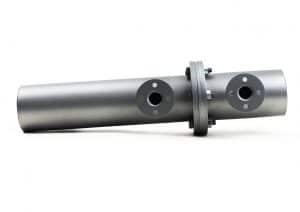 Throughout most modern industries, electrical thermal management has always played an important role in maintaining a company’s overall efficiency and level of operations. Though older, more conventional forms of electrical thermal management could often prove cumbersome to maintain, the burden was a necessary one for companies to shoulder. Today, however, more modern forms of electrical thermal management often rely on more natural methods of transferring waste heat that are also easier and more efficient to maintain. Thanks to the ability to rapidly and continuously transfer electrical waste heat before it can cause damage to electrical components, more modern thermal solutions have proven invaluable to companies in nearly every industry.
Throughout most modern industries, electrical thermal management has always played an important role in maintaining a company’s overall efficiency and level of operations. Though older, more conventional forms of electrical thermal management could often prove cumbersome to maintain, the burden was a necessary one for companies to shoulder. Today, however, more modern forms of electrical thermal management often rely on more natural methods of transferring waste heat that are also easier and more efficient to maintain. Thanks to the ability to rapidly and continuously transfer electrical waste heat before it can cause damage to electrical components, more modern thermal solutions have proven invaluable to companies in nearly every industry.
Transferring waste heat vs. chilling it
The goal of electrical thermal management solutions is to prevent the waste heat that electrical components emit from damaging those same sensitive components. Traditionally, the most effective method for achieving this was to utilize chilled air to keep temperatures inside of electrical enclosures sufficiently low. However, chilling the inside of electrical enclosures isn’t the only way to prevent electrical overheating, and with more advanced heat transfer techniques, companies can achieve high-performance cooling at minimal costs. The difference lies in the methods more modern thermal solutions utilize. Rather than generating chilled air to keep temperatures low, modern thermal solutions work by utilizing a cooling fluid to consistently absorb waste heat and transfer it somewhere it can be released safely.
Utilizing high-performance heat transfer methods
The use of more streamlined electrical cooling methods has become a frequently implemented strategy for companies that want to optimize their operations. For many companies, utilizing natural methods of transferring waste heat helps significantly lower the overall costs of operations, particularly in the realm of energy consumption. Without having to consistently generate and circulate chilled air, electrical thermal management solutions can keep high-performance electrical applications properly cooled with significantly less energy. Because heat transfer solutions don’t require as much complicated machinery to operate, they also help significantly lower the costs of maintaining a company’s electrical cooling systems.
Applications that benefit from transferring heat
Electrical cooling solutions have most frequently been implemented in applications that require the cooling of electrical enclosures. However, electrical enclosure cooling is only one of several highly important advantages to the use of modern heat transfer techniques. In some industries, thermal management plays important roles in more than just electrical cooling, but also in key production processes. For example, in the plastic molding industry, modern heat transfer solutions known as thermal pins can provide highly reliable, efficient, and consistent cooling of plastic molds, often equating to higher-quality yields on a more consistent basis.
For more information about why modern thermal solutions often rely on transferring heat, call Noren Thermal Solutions in Taylor, TX, at 866-936-6736.







